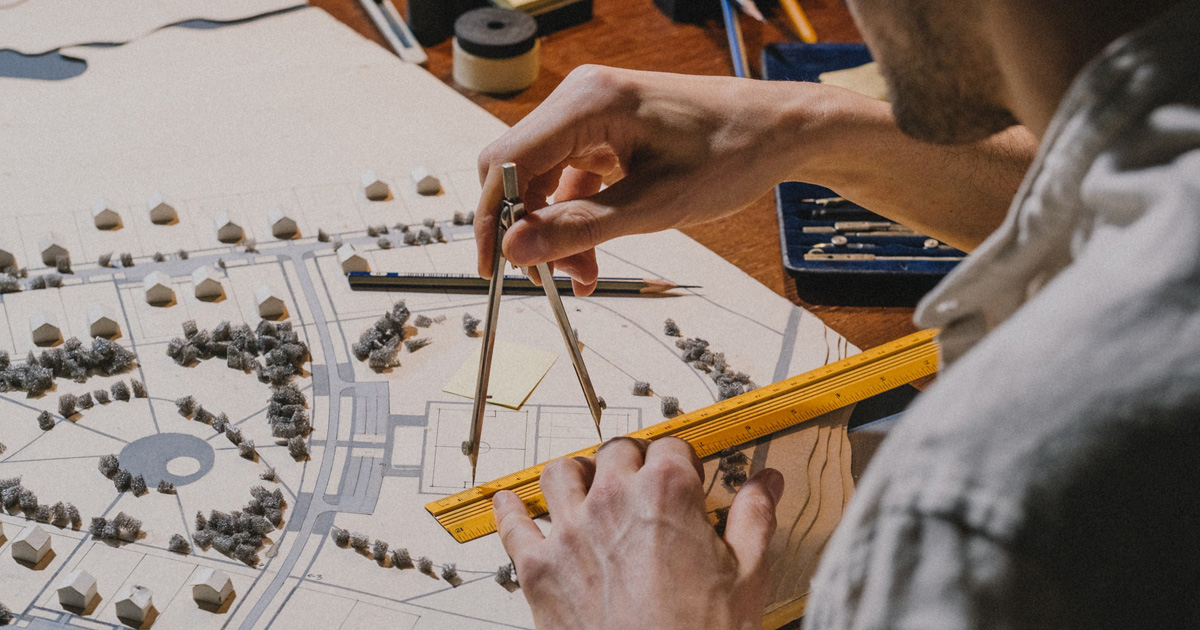Architect-Approved Home Improvement Ideas
Architect-Approved Home Improvement Ideas
Blog Article
Recognizing the Diverse Profession Paths Available for Aspiring Architect
As an aspiring Architect, you have a globe of job paths waiting for you. Whether you're attracted to conventional design or the subtleties of sustainable layout, there's a niche that lines up with your interests.
Conventional Design: Designing Buildings and Structures
Typical design concentrates on creating structures and frameworks that mix functionality with visual appeal. As you discover this field, you'll value the detailed balance between kind and objective. You'll learn to attract ideas from historic styles, including components like symmetry, materials, and workmanship. Your styles can mirror social heritage, showcasing local practices while satisfying contemporary requirements.
You'll establish abilities in drafting, model-making, and website analysis, permitting you to picture and interact your concepts successfully. Engaging with customers, you'll need to understand their vision and translate it into possible styles.
In addition, constructing codes and sustainability practices are crucial in your job, ensuring your structures are eco pleasant and safe. As you grow in your occupation, you'll locate opportunities in residential, business, or perhaps repair tasks, each offering one-of-a-kind challenges. Accepting traditional style leads the way for a meeting occupation that admires the past while forming the future.
Urban Preparation: Forming Neighborhoods and Public Spaces
As an ambitious Architect, you can play a crucial role as an urban organizer, transforming how neighborhoods function and connect. By utilizing community involvement approaches, you'll guarantee that homeowners have a voice in forming their environment. And also, incorporating sustainable layout principles will help create areas that not only fulfill today's demands but likewise secure the future.
Function of Urban Planners
While many may believe of architects as the single enthusiasts behind buildings, city planners play a crucial function fit the wider landscape of areas and public rooms. They analyze land use, zoning legislations, and community needs to develop sustainable environments that boost high quality of life. By working together with various stakeholders, you'll help make parks, transportation systems, and household locations that promote social interaction and availability. Urban coordinators also concentrate on ecological considerations, guaranteeing that advancements integrate eco-friendly rooms and support biodiversity. Your knowledge in spatial layout and area dynamics enables you to visualize future development while maintaining cultural heritage. In this important duty, you'll straight influence just how people experience their surroundings, making every project an opportunity for favorable modification.
Community Engagement Methods
Efficient community interaction techniques are essential for urban organizers to guarantee that the voices of citizens are listened to and valued in the preparation procedure. To promote significant dialogue, you must prioritize open discussion forums and workshops where area members can share their ideas and issues. Use surveys and social media to reach a broader target market, ensuring diverse perspectives are consisted of. Collaborating with neighborhood companies can boost depend on and help with deeper connections. It is necessary to supply clear information about proposed jobs and decision-making procedures, permitting homeowners to feel enlightened and encouraged. By proactively listening and incorporating responses, you'll create rooms that show the community's demands, eventually leading to even more lasting and effective urban environments. Welcome openness and continual dialogue for long-term impact.
Lasting Layout Principles
When developing city areas, integrating lasting design concepts is crucial for producing environments that thrive both environmentally and socially. Take into consideration integrating eco-friendly spaces, like yards and parks, to boost biodiversity and improve air top quality.
Designing with water conservation in mind is also essential-- believe regarding rain gardens and permeable surface areas to handle stormwater. Involving area participants during the planning procedure warranties that the rooms you produce meet their requirements and encourage social communication. By accepting these concepts, you'll contribute to lively, sustainable metropolitan landscapes that benefit every person.

Landscape Design: Creating Lasting Exterior Environments
As you check out landscape architecture, you'll find essential layout concepts that develop practical and stunning outside spaces. Lasting practices play a vital role in making certain these environments thrive while lessening environmental impact. And also, you'll locate a range of occupation chances that permit you to make a genuine difference in how people engage with nature.
Design Principles in Landscape
Understanding layout concepts in landscape style is essential for developing lasting outdoor environments that harmonize with nature. You'll need to ponder components like proportion, range, and equilibrium to guarantee your styles feel natural and welcoming. Integrating indigenous plants not only boosts biodiversity yet additionally decreases water use, making your landscape resilient. Think regarding the circulation of space and exactly how people connect with it; paths and seating areas must invite expedition and leisure. Furthermore, take note of seasonal adjustments, making with materials that enhance the surroundings year-round (Architect). By prioritizing sustainability and looks, you can create outdoor spaces that enhance the community and advertise wellness. Embracing these principles will certainly establish a strong foundation for your profession in landscape style.
Sustainable Practices Introduction
Lasting techniques in landscape architecture not just concentrate on looks yet likewise focus on environmental wellness and source conservation. By integrating native plants, you enhance biodiversity and decrease the need for chemical plant foods and chemicals. Applying efficient irrigation systems aids preserve water and lessens runoff, securing neighboring ecosystems. You can design rooms that promote soil health, such as making use of organic products and practicing permaculture principles. Additionally, including green framework, like rain gardens and permeable sidewalks, help in stormwater management and lowers city heat. You contribute to a healthier earth and offer spaces that cultivate community link when you develop outdoor settings with sustainability in mind. Eventually, these methods guarantee your designs profit both individuals and the environment for years to find.
Career Opportunities Expedition
With a solid foundation in sustainable techniques, landscape architecture supplies a selection of profession paths that allow you to make a purposeful effect on the environment. Urban coordinators frequently collaborate with landscape architects to produce environment-friendly spaces in metropolitan settings, enhancing city livability. If you're enthusiastic regarding education and learning, think about coming to be a landscape design educator, motivating future generations.
Lasting Design: Concentrating On Eco-Friendly Practices
As you explore your job in design, embracing eco-friendly techniques can establish you apart in an affordable area. Lasting design concentrates on developing structures that lessen environmental impact while boosting occupant wellness. By integrating renewable materials, energy-efficient systems, and sustainable building strategies, you'll add to a greener future.
Start by acquiring knowledge of eco-friendly accreditations like LEED or BREEAM, which can boost your qualifications. Take into consideration exactly how all-natural light, ventilation, and thermal performance can enhance layout. Collaborate with designers and environmental specialists to introduce options that decrease waste and save resources.
Do not fail to remember the significance of neighborhood involvement-- engaging regional stakeholders can motivate layouts that balance with the setting. As clients significantly focus on sustainability, your know-how in environmentally friendly methods will certainly not only bring in jobs yet additionally fulfill your interest for accountable style. Accept this vital facet of the profession, and enjoy your Architect career grow.
Historical Conservation: Safeguarding and Restoring Cultural Heritage
While you start on your building trip, consider the crucial duty of historic conservation in keeping our cultural heritage. This area concentrates on the security and remediation of significant buildings, sites, and frameworks that tell the tales of our past. By participating in historic preservation, you'll help protect the building legacy that forms neighborhood identity.
As a historical preservation Architect, you'll examine historic importance and examine the problem of frameworks. You'll function very closely with historians and conservationists to ensure genuine reconstruction techniques are used. This occupation path permits you to blend creativity with research study, allowing you to create remedies that appreciate original materials and craftsmanship.
Your job not just contributes to sustainability by reusing existing buildings but also fosters a feeling of pride within neighborhoods. Embracing this path will certainly assist you end up being a guardian of background, maintaining the stories and visual appeals that enhance our lives.
Inside Architecture: Enhancing Indoor Spaces
Historic conservation and interior design both share a commitment to boosting the built setting, but they focus on different aspects. While historic conservation emphasizes maintaining a structure's historical and social worth, interior style zeroes in on optimizing interior spaces for performance and appearances.
As an ambitious Architect, you'll locate that indoor style allows you to mix creativity with technical abilities. You'll make rooms that not just look excellent yet additionally promote comfort and efficiency. This field involves understanding how light, color, and materials engage within a space, impacting mood and use.
You'll work on various tasks, from property homes to commercial workplaces, ensuring that each environment satisfies the requirements of its residents. By focusing on individual experience, you can transform interiors into functional and inspiring areas, making a substantial effect on just how individuals communicate with their surroundings. Accept the possibility to boost indoor environments and form the means individuals function and live.
Industrial Layout: Combining Functionality With Aesthetics
Industrial layout plays a vital role in creating items that seamlessly blend visual appeals with capability, ensuring that what you make use of everyday is not just visually attractive yet likewise practical. As an ambitious Architect, you could engage on your own in this field, concentrating on developing every little thing from furniture to customer electronics. Your work involves here understanding customer demands, products, and making procedures, enabling you to create innovative services that improve day-to-day experiences.
In industrial layout, you'll usually team up with marketers, makers, and designers, ensuring that your styles are not just beautiful yet likewise viable. This profession course supplies a dynamic atmosphere where creative thinking meets practicality, making it a satisfying choice for architects interested in forming the products of tomorrow.
Often Asked Concerns
What Educational Credentials Do I Need to Come To Be an Architect?
To come to be an engineer, you'll need an expert degree in style, commonly a Bachelor's or Master's. Furthermore, you'll have to finish an internship and pass the Architect Registration Examination to practice legally.
Are There Certification Requirements for Various Building Profession Paths?
Yes, there're certification demands for various building paths. Architect. You'll require to pass tests, complete internships, and sometimes pursue specialized training, depending on your chosen emphasis, like landscape design, urban layout, or historic conservation
What Software Skills Are Necessary for Architects Today?

How Can I Gain Practical Experience While Researching Style?
You can get sensible experience by interning at architectural companies, joining layout competitions, offering for neighborhood tasks, or teaming up with classmates on real-world jobs. These possibilities boost your skills and develop beneficial connections in the industry.
What Job Opportunities Exist Outdoors Typical Style Firms?
You can explore numerous job chances outside standard design companies, like urban planning, indoor style, landscape design, construction management, property development, or even roles in sustainability consulting. Each offers unique obstacles and benefits.
Whether you're attracted to typical style Architect or the subtleties of sustainable design, there's a particular niche that straightens with your rate of interests.When designing metropolitan areas, including sustainable design concepts is important for developing settings that flourish both ecologically and socially.As you discover landscape style, you'll find important design principles that produce beautiful and useful outdoor spaces.Recognizing design concepts in landscape architecture is vital for creating sustainable exterior environments that integrate with nature.In industrial design, you'll usually collaborate with designers, producers, and online marketers, making sure that your designs are not just attractive but also feasible.
Report this page